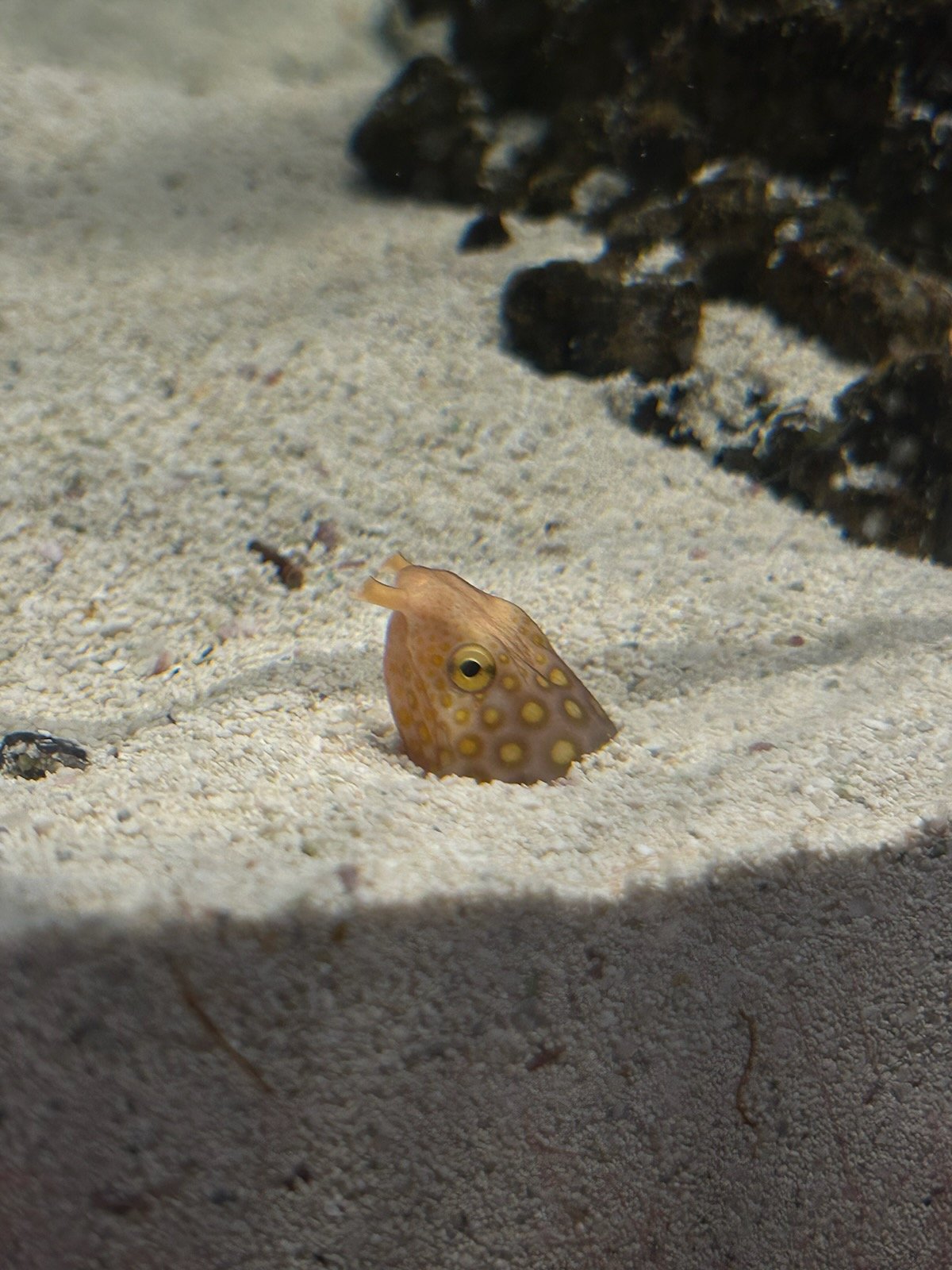The Eel-usive Gold-Spotted Snake Eel
A Gold-Spotted Snake Eel at the Tampa Bay Watch Discovery Center.
by Grace Beane
Hello! My name is Grace, and I am an environmental education intern here at the Discovery Center. Today I wanted to shed some light on an animal here that often gets overlooked!
Among the many exhibits on display at the Discovery Center, one of the more mysterious animals is located in the touch tank. In the deep section, most likely buried under the sand, is the Gold-Spotted Snake Eel. Although he is a little over a foot long, only the head of the eel can be seen above the sand on an average day. This is where snake eels are most comfortable, hiding underneath the substrate in an ocean or river. Due to this, it can be a little difficult to spot this little guy in our tank, and even more so out in the wild!
Snake eels belong to the family Ophichthidae and have many different species. Most of these eels live in tropical climates and love being in the warmer waters. You can find them living right out in the Tampa Bay estuary! They are close relatives to the infamous Moray Eel, though they are much less intimidating. They are very round critters with a pointed tail which helps them make their burrow. Snake eels use this hard end of their tail to start their burrow, then move backwards with their whole body to slither their way under the sand until just their head is visible.
The burrows themselves improve the circulation of nutrients through the sediment and contributes to better productivity in the ocean floor ecosystem. It is also the perfect hideout to lie and wait for food to come along. This predatory action helps maintain the balance of the food chain! Snake eels are also known as an indicator species. This means that their behavior can tell us about the health of their habitat or environment, like changing water temperature or pollution levels!
If you are lucky enough to catch our snake eel swimming around the tank, you’ll notice he moves like a snake would on land. His large and exaggerated “S” shaped movements help propel his body forward and backward. It’s a very graceful way to swim around! Take a trip to the Discovery Center to try and see our Gold-spotted snake eel in action. You can also learn more about our Tampa Bay estuary and how to protect and preserve it for all the creatures, like our eel, who call it home!


